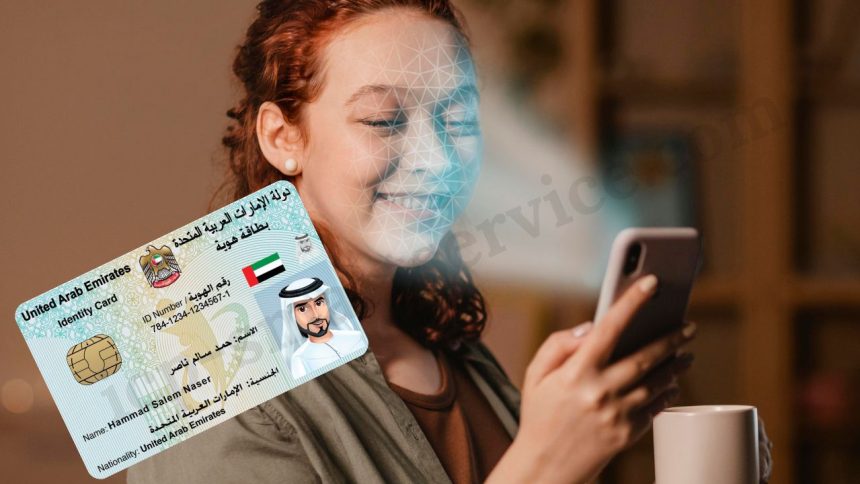Emirates ID Biometric Tech Uses Your Face as ID. The United Arab Emirates (UAE) is phasing out traditional Emirates ID cards. Replacing them is a state-of-the-art biometric system that uses facial recognition technology to identify residents, effectively turning your face into your ID.
- What is Changing About the Emirates ID System?
- Who is Leading This Biometric Revolution?
- How Will the New Emirates Biometric ID Work?
- When Will the Biometric Emirates ID Launch?
- What Does This Mean for South Africans in the UAE?
- Why Is the UAE Moving to Biometric ID?
- How Can You Prepare for the Biometric Future?
- Implications for Identity Systems Globally
- Conclusion
This shift not only aligns with global trends towards secure digital identity systems, but it also holds valuable insights for countries like South Africa, where biometric solutions are already in use for certain state services, such as SASSA grants and Home Affairs documentation.
What is Changing About the Emirates ID System?
The UAE is revolutionising its national identity programme by integrating facial biometrics to replace the need for carrying a physical Emirates ID. This means residents will soon be able to access services, verify identity, and perform official transactions using their face alone.
While Emirates ID cards have long been the standard form of identification in the UAE, this transformation is part of the country’s broader goal to become a fully digitised, smart government.
Enhanced Security and Convenience
According to the UAE government, facial recognition is considered more secure, less prone to fraud, and much faster in authenticating individuals than physical cards. It also reduces dependence on physical infrastructure, such as card readers or printed documents.
Who is Leading This Biometric Revolution?
The project is being spearheaded by the Federal Authority for Identity, Citizenship, Customs and Port Security (ICP). As the national agency responsible for identification and immigration systems, the ICP UAE has partnered with top-tier technology providers to develop and implement this ambitious system.
The move was disclosed in a formal reply by the ICP to a Federal National Council (FNC) inquiry. The question, raised by Dr Adnan Hamad Al Hammadi, focused on how electronic identity technologies are being promoted to improve public service delivery and security.
How Will the New Emirates Biometric ID Work?
The facial recognition technology being introduced relies on capturing and analysing biometric facial data. Once registered, a person’s face becomes a unique digital signature that can be used for:
- Border control and immigration
- Banking and financial services
- Healthcare access
- E-government services
- Telecommunications registration
- Airport smart gates and travel clearance
Unlike traditional ID systems, this one doesn’t require carrying any physical document. You’ll just look at a scanner or camera, and the system will instantly confirm your identity.
When Will the Biometric Emirates ID Launch?
The ICP UAE has confirmed that the facial recognition system has already undergone successful testing. A full-scale national rollout is expected within the next year, with the technology gradually being adopted across both the government and private sectors.
While the exact timeline for full implementation is not yet confirmed, the government’s plan is clear: phase out physical Emirates ID cards in favour of a unified biometric verification system.
What Does This Mean for South Africans in the UAE?
For South African expats living in the UAE, this change is particularly relevant. Your Emirates ID may soon become obsolete, replaced by your digital facial profile. It’s important to stay updated with the latest registration procedures via the ICP UAE official channels.
If you haven’t yet registered your biometrics beyond the initial visa process, it’s advisable to begin preparing for updates to your identification status.
Why Is the UAE Moving to Biometric ID?
There are several motivations behind this shift, many of which resonate with global identity trends:
| Motivation | Benefit |
|---|---|
| Improved security | Reduces identity theft and fraud risks |
| Digital government goals | Supports UAE Vision 2031 for tech-driven services |
| Cost efficiency | Reduces costs of card printing and distribution |
| User convenience | No need to carry or renew physical cards |
| Global leadership in innovation | Positions UAE as a pioneer in biometric tech |
This change mirrors similar initiatives in countries like Estonia and Singapore, where digital identity is already the norm.
How Can You Prepare for the Biometric Future?
Whether you’re in the UAE or observing from abroad, here’s what you should do:
- Update Your Contact Information with ICP to receive alerts
- Monitor Official Communications from the UAE Government
- Register for Facial Recognition when invited to do so
- Verify Your Digital Identity Profile through official channels
This is particularly important for foreign nationals, including many South African citizens working or studying in the UAE, who rely on the Emirates ID for almost all official transactions.
Implications for Identity Systems Globally
South Africa, too, has made strides in using biometrics in social services and border control, but the UAE’s approach opens new possibilities. Instead of relying on fingerprint scanners or card-based IDs, facial recognition systems could offer more accessible, hygienic, and efficient identification methods.
As the Department of Home Affairs considers future-proofing our national ID system, the UAE’s model offers a potential benchmark for modernising South Africa’s digital identity landscape.
Conclusion
The UAE is once again at the forefront of innovation by turning the humble face into a secure passport to modern life. As the biometric Emirates ID becomes the new norm, it’s a timely reminder that the future of identity is digital, seamless, and facially intelligent.










